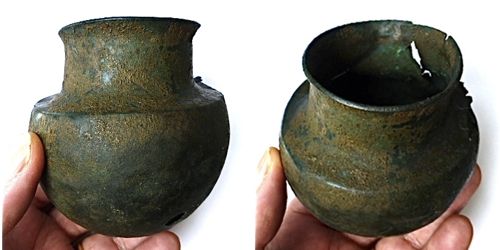Antique medicine |
||
Cupping glas |
||
Bronze Roman cupping pots are exhibited in several European museums. They come from so-called "doctor's graves" and represent as "pars pro toto" the entirety of the instruments of the doctor dar. They all have a slim mushroom shape - the round top is sharply separated from the neck and can have a ring for hanging. exhibits:
As a particularly "vitrinefähig" we present a "Roman" cup of unknown provenance, purchased in a Canadian antique shop in Ottawa / Ontario (Certificate of Authenticity) - the previous owner had acquired it in the early 60s in New York. Typical bell-shaped vessel body with distinct neck. Height 8.3 cm. The edge is rounded, often also bent back outward. This avoids a painful pressure of the edge on the skin and achieves a good seal. Whether real or fake, we dare not decide - you ask Mr Künzl, you do not need to wait for the answer to know that he is unreal! Be that as it may, the subject stimulates discussion about medical practice 2000 years ago. |




